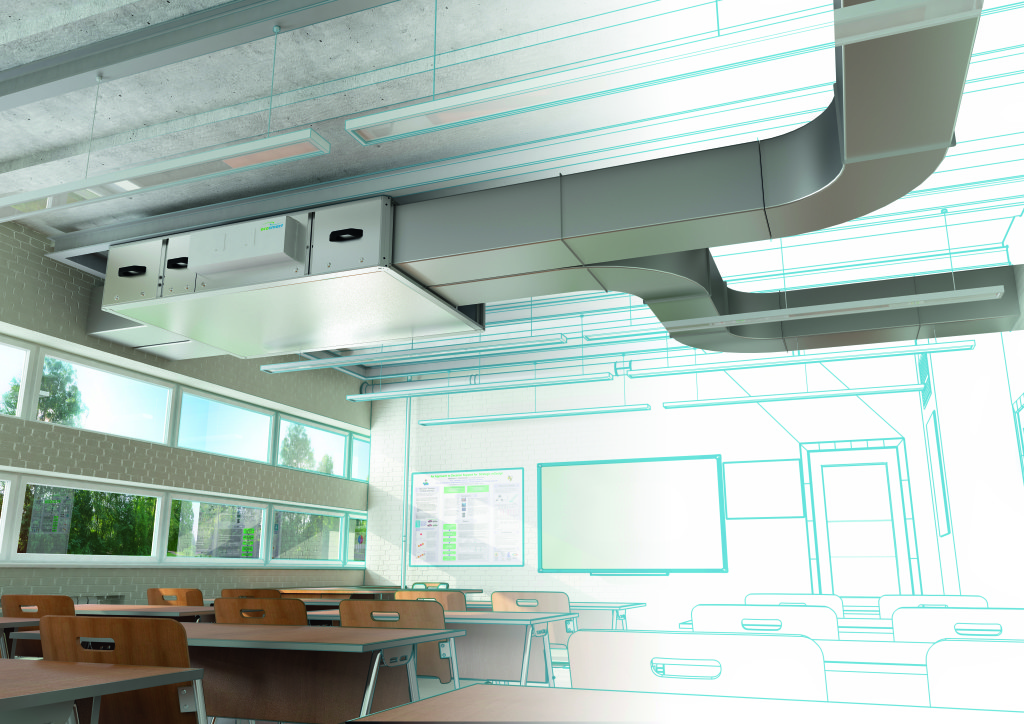Smart Controls are key to unlocking better building performance

Modern buildings are being designed and constructed for greater efficiency, sustainability, and decarbonisation in line with the industry-wide net zero approach – and due to this shift, every installed system being considered is under the microscope in terms of its performance.
Ever increasing energy bills and tighter controls on emissions have led to stricter building regulations, raising the bar required to deliver sweeping improvements to the built environment.
Only Class C efficiency
However, 80% of buildings have already been built to old building regulations and only one in five buildings have a building management system (BMS) to regulate and control the inner workings of the building, resulting in most commercial buildings operating at just Class C energy efficiency.
A key focus for meeting targets in 2050 must be the refurbishment and refit of these buildings. The use of smart controls as part of the BMS could be one of the keys to unlocking better building performance.
The new building regulations (Part L and Part F) set out stricter building and infrastructure standards enforced to ensure that both older and new buildings will be more energy efficient and not contribute to climate change.
However, older working buildings pose complex efficiency issues; from overheating, ventilation effectiveness and heat retention. The majority of buildings in the UK rely on natural ventilation through high levels of air permeability, yet the strive for more airtight properties means that building developers must carefully specify natural and background ventilation methods to provide adequate levels of air movement throughout the property. If ventilation cannot be achieved to standard through these methods, a continuous mechanical extract ventilation system should be installed.
Energy loss due to ventilation accounts for approximately one fifth of space-heating energy demand in an older poorly insulated building. In a new energy efficient build for example, the high insulation levels mean that the proportion of space-heating demand due to ventilation increases to around a third. Equally, natural air infiltration alone can result, at times, in too little ventilation.
This leads to poor indoor air quality and other, more readily visible impacts, such as condensation and mould on indoor surfaces. The objective of a good ventilation strategy is, therefore, to provide a balance between energy efficiency and indoor air quality.
Regulations on building service systems
Approved Document Part L is designed to accelerate the progress to net zero carbon buildings. There are higher performance targets and a new emphasis on low carbon heating systems, but the regulations also state that building service systems should be provided with appropriate controls to enable the achievement of reasonable standards of energy efficiency in use.
Under normal circumstances, this legislation suggests that building systems should respond to the energy requirements of the space it serves. Each space should be considered its own separate control zone, and each separate control zone should be capable of independent timing and temperature control and, where appropriate, ventilation and air recirculation rate.
What can you specify
Today, consultants can specify ventilation units pre-installed with its own control system. This intelligent set up will manage the CO2, temperature, and humidity of its control zones, saving on install time and mitigating common installation problems.
These plug-and-play control panel solutions, such as Nuaire’s ECOSMART Classic, provide a low voltage (0-10V) BMS interface, trickle and boost as standard and deliver successful energy control with demand control ventilation at the users’ fingertips. Our ECOSMART control platform can also adapt to work with brands such as Trend and Johnson’s, so is flexible for most builds.
UK falling behind
Although, despite Europe being the third largest energy consumer in the world and the world’s largest energy importer, the UK is falling behind in the installation of smart control technology. The consequences are both near and far, with higher energy bills being faced by industrial consumers, and significant emissions experienced across the globe.
Only 80% of commercial buildings are operating at class C energy efficiency with timer-based programming rather than sensor-based, demand orientated activation when it comes to ventilation and cooling. Smart controls can provide impactful energy efficiency and cost savings with networked connectivity and site-specific controls that monitor trends to adapt to meet site requirements.
With the adoption of smart controls for these operations, buildings would see better indoor air quality and greater efficiencies in each season, from summer through to winter, with systems adapting to the need of the occupied space.
As an industry, we need to future proof our buildings by looking at the way the space is used and how it may need to adapt over time and only then can efficiencies be maintained.








